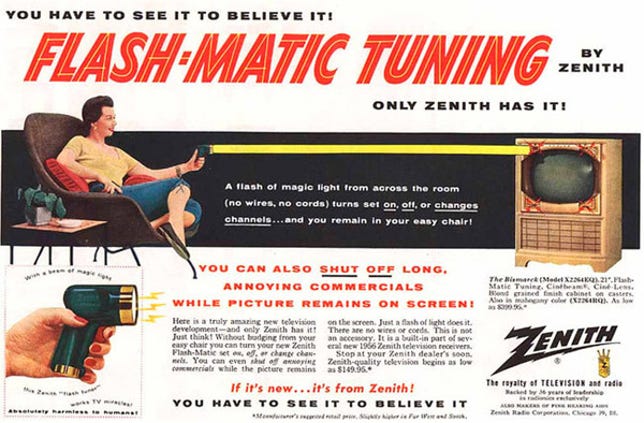The man who invented the wireless TV remote control, Eugene Polley, passed away over the weekend.

(Credit: LG)
Forget HD, forget 3D, forget 4K and 8K, forget HDMI; it’s arguable that the wireless remote control is the single most important feature innovation in the history of television. It freed us from the tyranny of laziness that trapped many of us into watching shows or commercials that we didn’t really want to watch. In turn, though, it trapped us in another form of laziness as we sat, almost motionless, for hours on the couch, flicking between channels hoping (vainly, in some cases) for something interesting to watch.
According to his obituary in The New York Times, Polley’s remote was marketed in 1955 by Zenith as the Flash-Matic, and was, essentially, a torch. Compatible TV sets had four photosensitive cells, one at each corner of the screen, each responsible for a different function (channel up, channel down, mute/unmute, power on/off).
It wasn’t the first remote control, however. In 1950, Zenith began shipping TVs with a cabled remote control, dubbed Lazy Bones. However, it proved unpopular, as people would often trip over the cord as it wound its way from TV to couch.
Zenith sold around 30,000 Flash-Matic-enabled sets in the first year, but there were problems with sunlight and reflections easily confusing the TV. In 1956, Zenith replaced its light-based Flash-Matic remote with the Space Command remote that used high-frequency sound waves instead.
For his invention, Zenith paid Polley a bonus of US$1000. He passed away at the age of 96.




